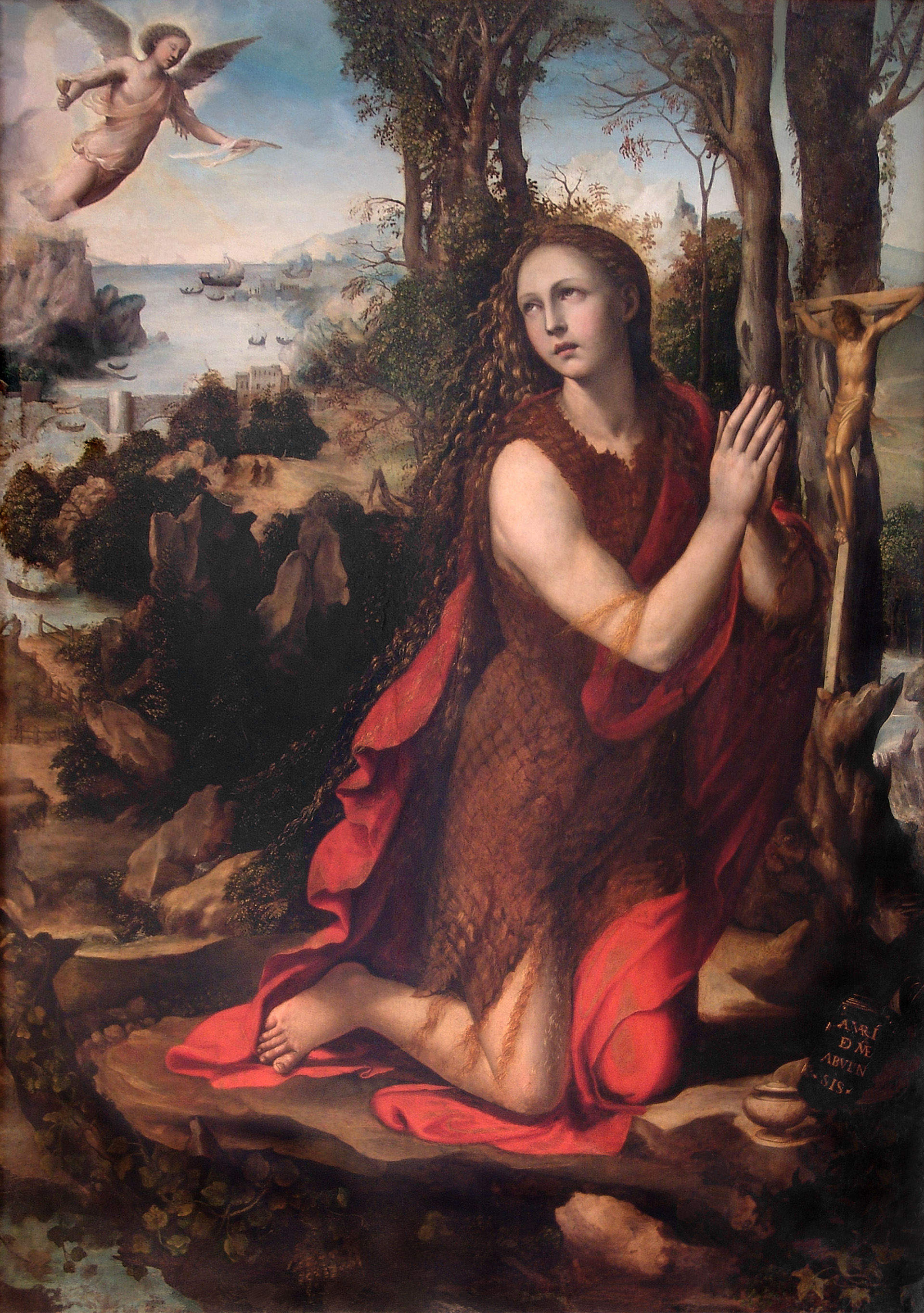A few years before the present panel was executed, first humanism and then Lutheranism condemned the dedication of Mary Magdalene as the artificial fruit of the amalgamation of various Gospel and apocryphal figures and local traditions, a fusion that had begun in late antiquity and was perfected in the Middle Ages. The Catholic response turned this invocation into an exemplary metaphor for the exaltation of the value of the disputed sacrament of penance. Its iconographic representation was inherited from the Middle Ages, whose "canonical" version was consecrated in the middle of the 13th century by the Italian Dominican Saint James of Voragine in The Golden Legend, according to which Mary Magdalene is said to have been a fabulously rich and incredibly beautiful woman who abandoned her life of lust to follow Jesus and then, expelled from the Holy Land, miraculously arrived in Marseilles where, after evangelising Provence, she withdrew to a hermit's life in a grotto in the Sainte-Baume massif.
The iconographic composition of this image reflects medieval tradition and shows its main attributes: the crucifix and the jar of perfume. However, despite being a devotional panel, it is not alien to a more worldly ideal of beauty and the depiction does not solely emphasise the idea of retreat and penitence. The figure of the Magdalen does not turn her gaze towards the cross, nor has she lost her sensuality, and her melancholy face does not yet show the signs of deprivation or the heaviness of repentance. Not even the saint is clearly placed before the landscape, but the painter gives almost equal prominence to both, seeming to want to integrate her into a nature that is more Arcadian than penitential, full of life and maritime activity, which perhaps finds its pretext in the desire to depict the Provençal port where the saint arrived.
When it was restored in 1994 at the Metropolitan Museum of Art in New York, its European Painting department, headed by Keith Christiansen, attributed it to the Piedmontese painter Giovanni Antonio Bazzi, a Sienese by choice, and dated it to the 1530s, a dating and attribution that was essentially based on the fact that the painting's landscape reveals Bazzi's interest in Flemish painting and, through the figure of the Magdalen, the influence of Leonardo da Vinci. This attribution has been unanimously accepted as the eclecticism that characterised this painter is perceptible in the painting (Ángel Aterido, 2000). The SodomThe work was the foundation for both his enormous success during his lifetime and his more modest critical fortune later on.
This panel is from the Chapel of the Saviour in Úbeda, a pantheon whose construction was begun by Francisco de los Cobos, private and state secretary to Emperor Charles V, and completed by his widow María de Mendoza. The inscription in the lower right-hand corner reveals that it was a gift from Álvaro de Mendoza, brother of the aforementioned María, a personage known primarily for his support, as bishop of Ávila, for Saint Teresa in her first foundation, the convent of San José in Ávila. We hardly know anything about his life before 1560, but judging by the little information Hayward Keniston offers in his biography of the imperial secretary, he must have been the closest relative of María de Mendoza and her brother-in-law Francisco de los Cobos: In 1541, he became chaplain to the New Kings in Toledo and signed as a witness to the entailed estate constituted in favour of his nephew Diego. In 1547, on the very day of Cobos's death in Úbeda, he appeared in that city accompanying Diego to present the Commander's will before the corregidor, a document in which he was the only member of the Cobos-Mendoza family to appear as executor. The lack of interest in his approximately five decades of life prior to his episcopal appointment in 1560 prevents us from knowing about his training and whether he travelled to Italy, but there is no lack of relatives and close relationships with the Cobos family that could explain the testimonies he has left of his appreciation for Italian devotional painting. The most important of these is to be found in the convent of San José in Ávila, whose main chapel the bishop chose as his burial place and to which he donated a panel, with an inscription on the frame very similar to the present one, of the Christ with the Cross by Sebastiano del Piombo, a copy dated 1544 of the one commissioned by the Venetian Count of Cifuentes in 1537, now at the Hermitage.



